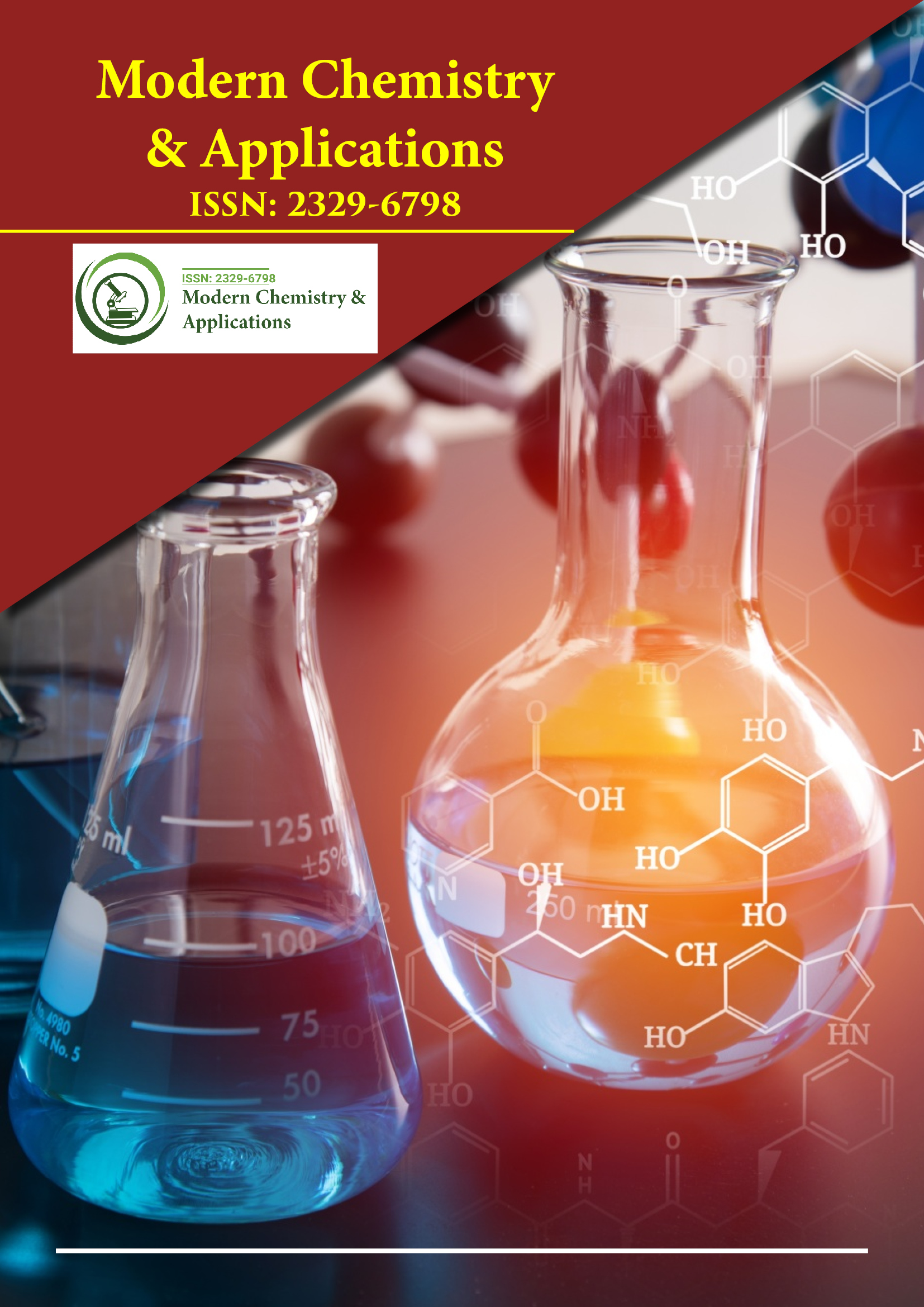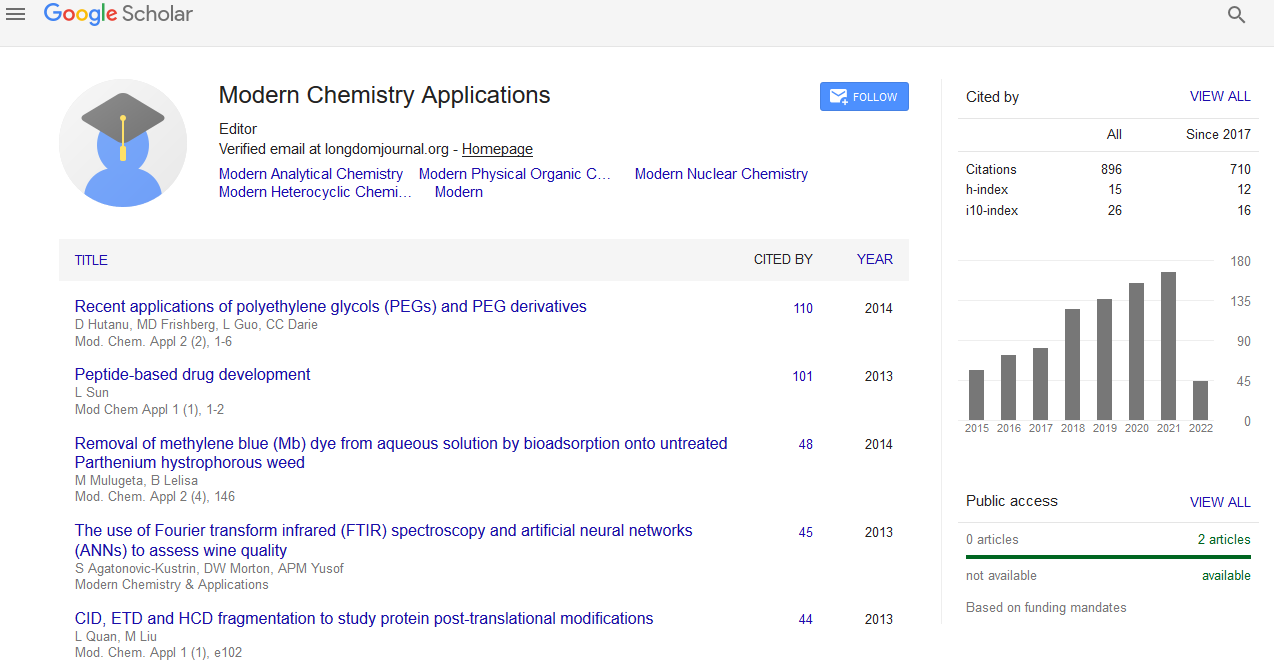Indexed In
- Open J Gate
- JournalTOCs
- RefSeek
- Hamdard University
- EBSCO A-Z
- OCLC- WorldCat
- Scholarsteer
- Publons
- Geneva Foundation for Medical Education and Research
- Google Scholar
Useful Links
Share This Page
Journal Flyer

Open Access Journals
- Agri and Aquaculture
- Biochemistry
- Bioinformatics & Systems Biology
- Business & Management
- Chemistry
- Clinical Sciences
- Engineering
- Food & Nutrition
- General Science
- Genetics & Molecular Biology
- Immunology & Microbiology
- Medical Sciences
- Neuroscience & Psychology
- Nursing & Health Care
- Pharmaceutical Sciences
Full structural elucidation of quinazoline-Schiff bases using 2D-NMR studies
5th Global Chemistry Congress
September 04-06, 2017 | London, UK
Neha Manhas, Parvesh Singh and Neil A Koorbanally
University of KwaZulu-Natal, South Africa
Posters & Accepted Abstracts: Mod Chem Appl
Abstract:
Quinazoline nucleus is not only present in various therapeutic agents but also form an important structural component of natural products. The prazosin (anti-hypertensive), methaqualone (hypnotic), metolazone (diuretic), raltitrexed (anticancer) and (+)-febrifugine (anti-malarial) are few commonly used drugs that contains quinazoline ring as a core. Over the past few decades, the synthesis of quinazoline derivatives has attracted considerable attention of the synthetic chemists worldwide owing to its diverse medicinal activities including anticancer, anti-HIV, antibacterial, anti-inflammatory, anti-malarial, and anti-tubercular activities. The most established preparative methodologies for quinazoline synthesis involve its use. On the other hand, Schiff bases (>C=N), also known as imines or azomethines, are another widely explored intermediates in heterocyclic synthesis with various biological/medicinal applications such as anticancer, anti-tubercular and anti-inflammatory activities. Consequently, several research papers and review articles regarding the design and synthesis of new and promising quinazolines or Schiff bases or both as their hybrids have been documented in international peer-reviewed literature. In view of the above facts, we prepared a new series of quinazoline-tethered Schiff bases by condensation of 3-aminoquinazolinone with a variety of aldehydes. Predominantly, fluorinated Schiff bases were targeted owing to the property of fluorine atom to increase in metabolic stability and bioavailability of organic scaffolds. Additionally, the molecular hybrids of quinazoline with other pharmacophores such as quinolines, thiophene and indole were also prepared owing to their existence in biologically significant heterocycles and drug molecules. The full structure elucidation of all synthesized compounds was subsequently performed using 2D NMR (HMBC, HSQC, COSY, and NOESY) techniques followed by the extensive analysis of the chemicals shifts and splitting patterns of all compounds. The 19F being NMR active splitted both the proton and carbon nuclei of the compounds, and played a significant role in characterization process.
Biography :
Neha Manhas completed her Master’s degree in Chemistry from Durban University of Technology (South Africa), and currently pursuing her Doctorate in the School of Chemistry and Physics at University of Kwazulu-Natal (UKZN), Durban, South Africa. Her PhD research focuses on “The synthesis, biological evaluation and molecular modeling of novel quinazoline based heterocycles”. She has co-authored three research publications in the peer-reviewed journals.


